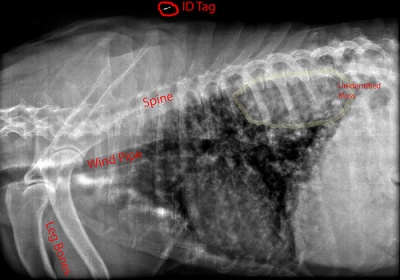
If your pet is lame, either temporarily or permanently, you will have to make some changes in its care.
Caring for a lame dog
Lameness in dogs is very common and can be due to injury or a chronic condition. The first thing to do when you notice this problem is to take your dog to the vet and find out if he has a chronic lameness or acute lameness. For chronic lameness, the focus will be on controlling the symptoms while for acute lameness the focus is on curing it. Your vet may prescribe medication and will recommend either exercise or rest. If the dog is supposed to stay off the foot, he may need to be confined in a small area to prevent him from moving around and doing further damage. If the lameness gets worse instead of better go back to the vet so he can adjust treatment.
Permanently disabled dogs can be fitted with a “wheelchair.” The chairs allow the dogs to get exercise and to play. Dogs will get tired of the wheelchair and shouldn’t be in it for more than two hours at a time. They need to be supervised while in the chair since they can tip over.
Video: Dog Wheelchairs
Caring for a lame cat
The two main causes of lameness in cats are infection and injury. Infection is treated with antibiotics while injuries are treated with rest. If the vet can’t determine which factor is causing the lameness, he may prescribe antibiotics and rest.
Cats are adept at hiding pain because an animal in the wild with an obvious illness or lameness would be easy prey. Some cats will continue to walk even though they are in pain. It is important to pay special attention to how your cat is walking in order to detect problems which are not obvious.
Cats are sensitive to some of the products generally used for pain control, but recently researchers have discovered how to give pain medication to cats. The painkiller drugs in the opioid group, such as morphine and related drugs (oxymorphone, hydromorphone) can be given in appropriate doses. Acetaminophen, carprofen, and aspirin are not safe for cats.
Older cats may become lame due arthritis. A recent study found that 90% of cats over 12 years had arthritis. This may be treated with glucosamine sulfate and MSM mixed into the cat’s wet food.
Caring for a lame horse
Lameness in horses can be detected by checking for nodding of the head while trotting. If the problem is in a front leg, the horse will throw his head up as the sore side touches the ground. If the problem is on a hind leg, the horse will drop his head when leaning on it.
Lameness in a horse can be caused by arthritis, a bruised muscled due to a kick or fall, damaged tendons, abscesses or a skin problem. A horse may also limp because of rocks or pieces of glass lodged in the hoof.
If there is nothing lodged in the hoof, call your vet. While you wait for him to arrive, keep the horse in his stall. Do not apply ice or heat to the horse’s leg since this can foil the vet’s diagnosis.
The vet may prescribe painkillers and anti-inflammatory medication. If used for too long, these medications can have unwelcome side effects such as damage to the bowel lining and liver.
Unless you are otherwise directed by a vet, do not ride a lame horse.
Related Articles


